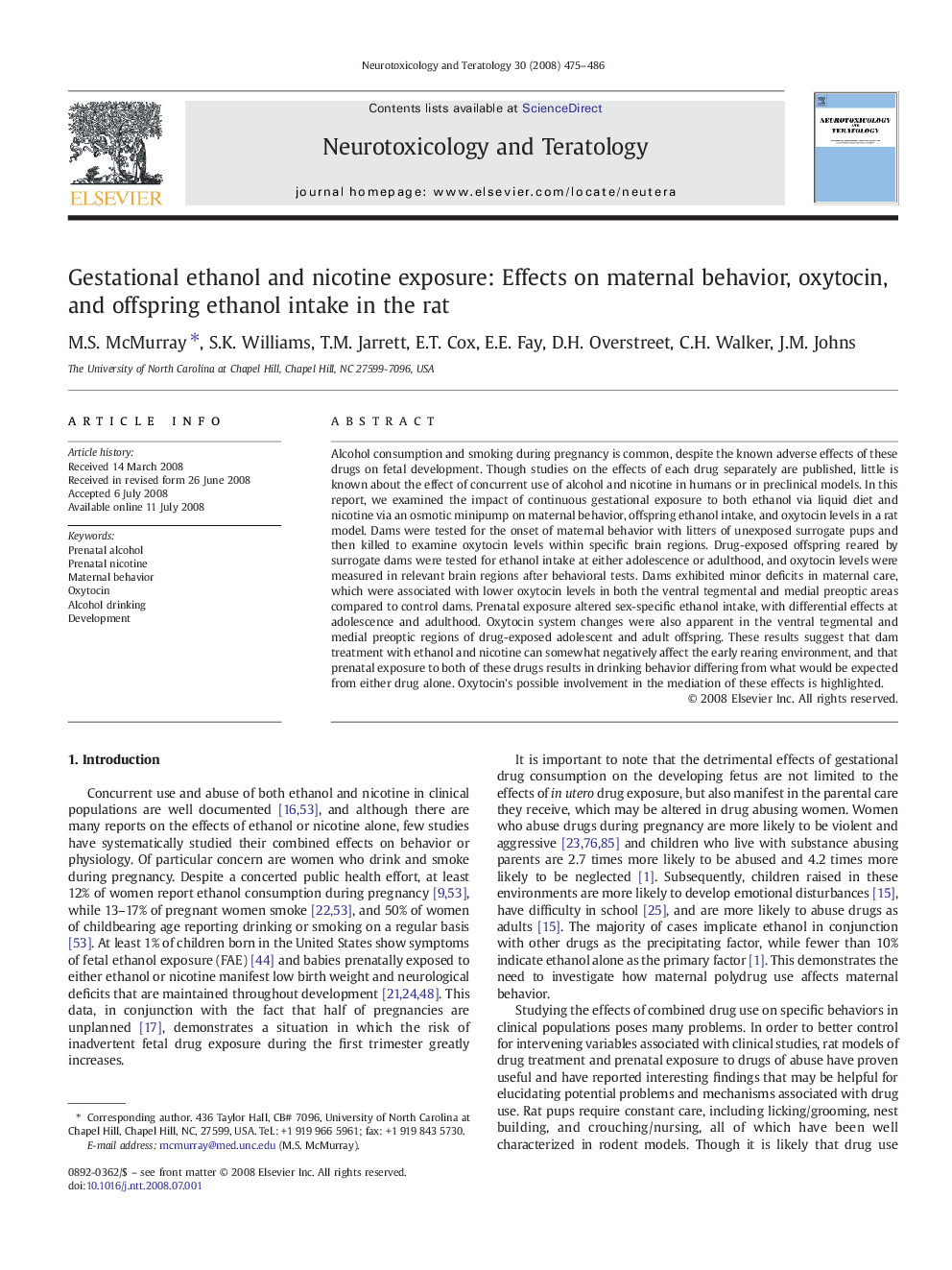| Article ID | Journal | Published Year | Pages | File Type |
|---|---|---|---|---|
| 2591753 | Neurotoxicology and Teratology | 2008 | 12 Pages |
Alcohol consumption and smoking during pregnancy is common, despite the known adverse effects of these drugs on fetal development. Though studies on the effects of each drug separately are published, little is known about the effect of concurrent use of alcohol and nicotine in humans or in preclinical models. In this report, we examined the impact of continuous gestational exposure to both ethanol via liquid diet and nicotine via an osmotic minipump on maternal behavior, offspring ethanol intake, and oxytocin levels in a rat model. Dams were tested for the onset of maternal behavior with litters of unexposed surrogate pups and then killed to examine oxytocin levels within specific brain regions. Drug-exposed offspring reared by surrogate dams were tested for ethanol intake at either adolescence or adulthood, and oxytocin levels were measured in relevant brain regions after behavioral tests. Dams exhibited minor deficits in maternal care, which were associated with lower oxytocin levels in both the ventral tegmental and medial preoptic areas compared to control dams. Prenatal exposure altered sex-specific ethanol intake, with differential effects at adolescence and adulthood. Oxytocin system changes were also apparent in the ventral tegmental and medial preoptic regions of drug-exposed adolescent and adult offspring. These results suggest that dam treatment with ethanol and nicotine can somewhat negatively affect the early rearing environment, and that prenatal exposure to both of these drugs results in drinking behavior differing from what would be expected from either drug alone. Oxytocin's possible involvement in the mediation of these effects is highlighted.
